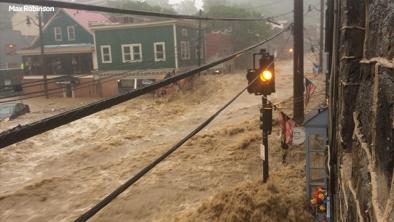Science Source
Signal detectability in extreme precipitation changes assessed from twentieth century climate simulations
- Assesses the detectability of external influences in changes of precipitation extremes in the twentieth century
- Defines three indices of precipitation extremes from the generalized extreme value (GEV) distribution: the 20-year return value (P 20), the median (P m), and the cumulative probability density as a probability-based index (PI)
- Analyzes time variations of area-averages of these three extreme indices over different spatial domains from the globe to continental regions
- Estimates the amplitudes of response patterns to anthropogenic (ANT), natural (NAT), greenhouse-gases (GHG), and sulfate aerosols (SUL) forcings, treating all forcing simulations (ALL; natural plus anthropogenic) of the twentieth century as observations and using a preindustrial control run (CTL) to estimate the internal variability
- Results show that there are decisively detectable ANT signals in extreme precipitation changes in global, hemispheric, and zonal band areas
- Finds that when only land is considered, the global and hemispheric detection results are unchanged, but detectable ANT signals in the zonal bands are limited to low latitudes
- Finds that the ANT signals are also detectable in the P m and PI but not in P 20 at continental scales over Asia, South America, Africa, and Australia
- Results indicate that indices located near the center of the GEV (generalized extreme value) distribution (P m and PI) may give better signal-to-noise ratio than indices representing the tail of the distribution (P 20)
- Finds that GHG and NAT signals are also detectable, but less robustly for more limited extreme indices and regions
- Finds that these results are largely insensitive when model data are masked to mimic the availability of the observed data
- An imperfect model analysis in which fingerprints are obtained from simulations with a different GCM suggests that ANT is robustly detectable only at global and hemispheric scales, with high uncertainty in the zonal and continental results
Related Content
Headline

May 30, 2018 | Washington Post
The concept of a thousand-year rainstorm is legitimate but limited. Here’s what you should understand about it.
Headline

May 30, 2018 | USA TODAY
Ellicott City residents wonder: Was enough done after the 2016 flood to prepare for the next one?
Headline

May 28, 2018 | Washington Post
Man missing, search underway after massive flooding in Ellicott City, Md.
Headline

May 28, 2018 | Washington Post
The second 1,000-year rainstorm in two years engulfed Ellicott City. Here’s how it happened.


